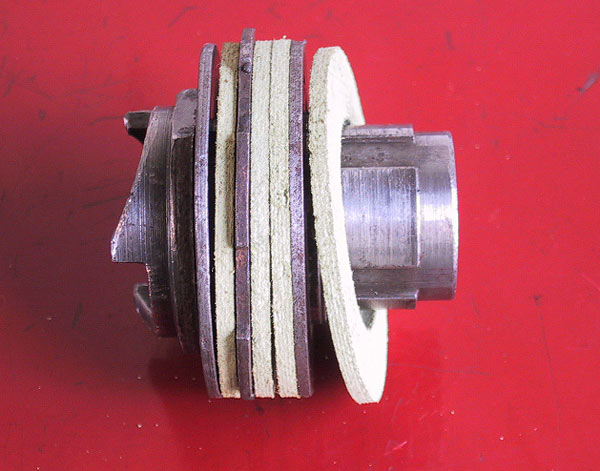 |
The carrier nut with 4 friction disks, externally notched washer and internally notched washer in position. The 20/25 originally had 3 cork disks. Modern Ferodo disks are thinner and need four pieces to produce the same torque effect. NOTE - R-R introduced various modifications to the friction drive that were retro-fitted in service. Please refer to TSD2066/sec RR.Q8 for information regarding single, 3, 5 and 7 disc packs and apply the appropriate set-up for you car. |
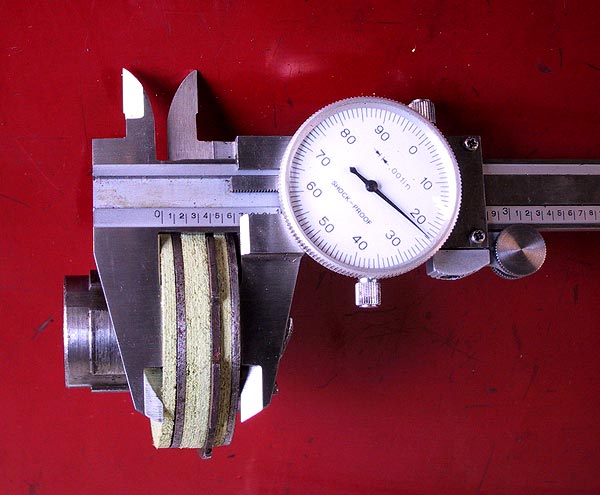 |
Once assembled the friction pack should measure 0.623" - as shown here. The effective torque range should be 15-30 ft/lbs. |
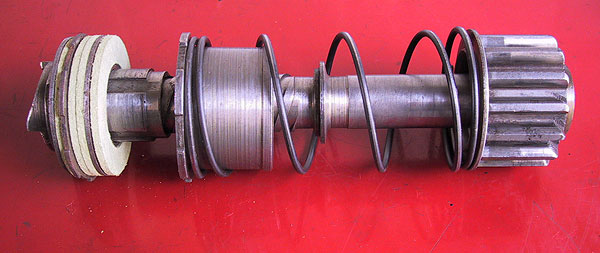 |
All of the internal components ready for assembly in the cage. Note that the Acme threads on the main shaft / carrier nut are left handed. |
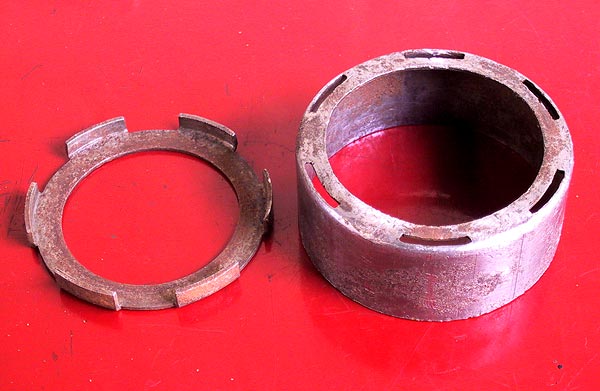 |
The washer on the left fits over the dog nut, teeth downwards, after the friction assembly is fitted into the cage. |
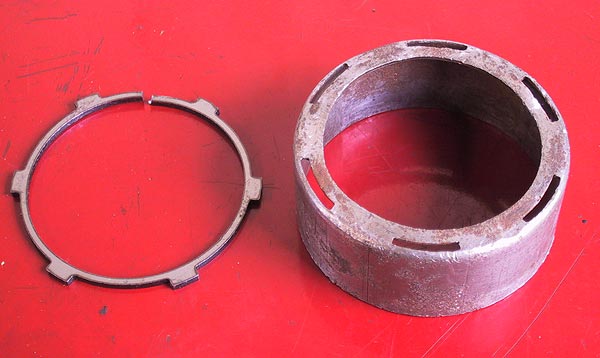 |
The cap fits over the legs of the cage and is located by the lock ring, the teeth of which slot into the holes in the cage legs.
|
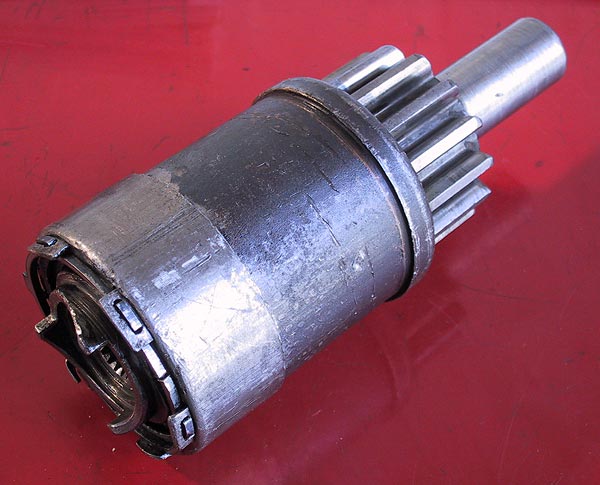 |
Assembly is achieved by winding the shaft into the carrier nut. After the nut is located inside the cage legs the shaft can be held in a soft-jawed vice, against the pinion, to prevent the main spring unwinding. The top washer, cap and lock ring can then be attached without having to fight the spring pressure. |
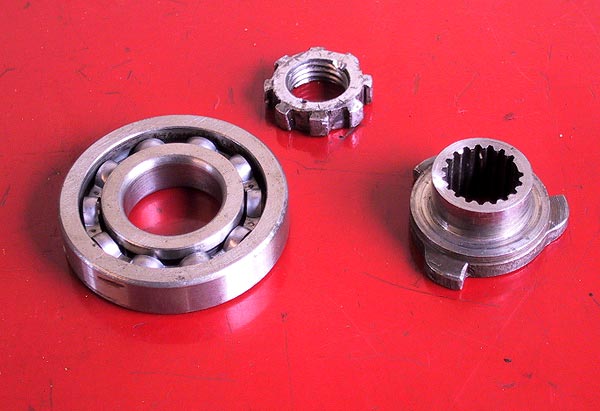 |
The splined dog, bearing and lock nut. There is a plain washer that sits between the bearing and nut when finally assembled on the shaft. Note the double-width tooth on the dog's spline. |
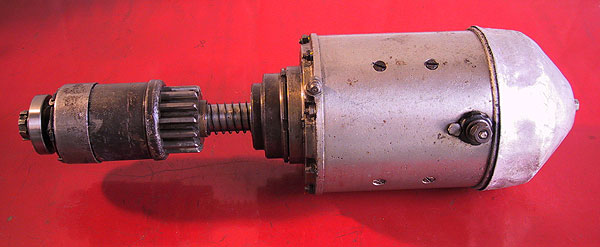 |
The whole unit temporarily assembled. In order to fit the starter motor to the engine it is necessary to remove the clutch assembly. The former is fitted from the front side of the engine, the shaft passing the side of the flywheel, and the clutch mechanism is then attached from inside the main clutch housing. The bearing is supported by its own separate casting, which bolts to the bell housing. |
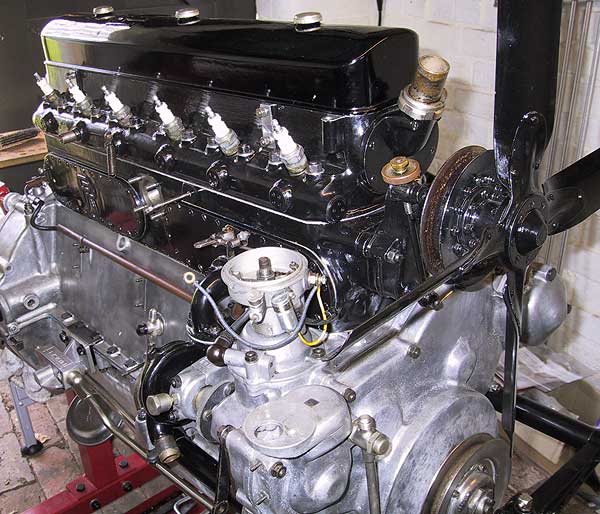 |
Off side.
|
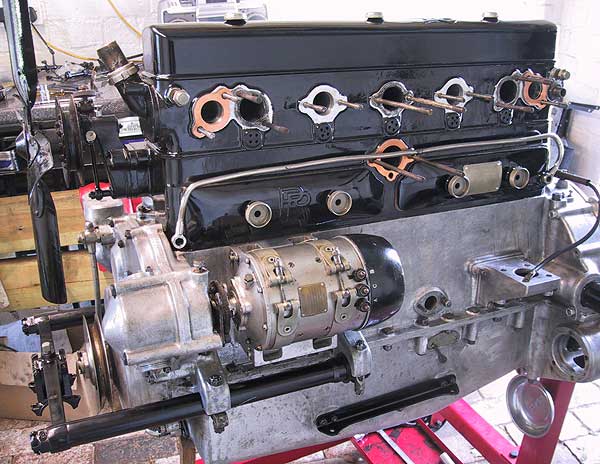 |
Near side. |